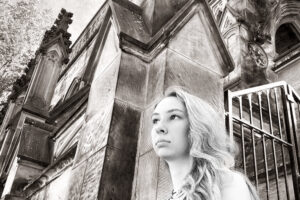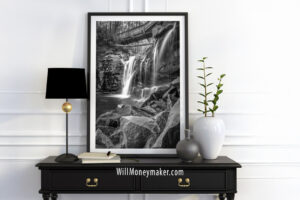For many of us, winter gives us thoughts of short, dreary days and long, frigid nights. Between the weather and the lack of daylight, it can be hard to get inspired to take photographs. In some respects, I think this is what makes winter so special as a season. When everyone else stays home, you can be out capturing the images that no one else has thought to take.
It’s an ideal time of year for black and white photography, and if you dress warm enough, it’s also a great time to do long exposures at night. Around the Holidays, you’ll have lights and decorations to experiment with, and out in nature, animals abound and there are numerous new ways to photograph the prior year’s fruits and foliage.
So if you’re suffering from winter dreariness, remember that there is just as much out there to photograph now as there is during the warmer months. And, if you’re stuck for ideas, the following list features a variety of subjects that you can photograph outdoors or from the comfort of your own home to help get you inspired. Use these ideas as a starting point to get your mind thinking about cold weather photography.
1. Frost
Frost is a common wintertime theme, but one with so many different aspects to explore. The traditional photograph is frost spreading over a window or mirror—and this is always a great image to make because frost makes infinite patterns on glass. But that’s not the end of the things you can do with a good morning frost.
Start big and think about landscapes. There’s something ethereal about a frosty morning that just can’t be matched any other way. Pay close attention to how the sun sparkles on the landscape and see if you can replicate that effect. Then, zoom in and take some photos of frost in the grass, or on tree bark. Spend time really exploring your environment to find what is unique about it. Frost covers everything, so you’ll see not only beautiful icy leaves but things like seed pods or last year’s flowers. You may find the molted carapaces of insects covered in ice, a frosted spiderweb, or longer spikes of frost on the fence wire. Perhaps there are puddles in which the frost is creating unusual patterns. Be on the lookout for every last detail imaginable to make the most of a good, frosty morning.
2. Snow
Snow is another wintertime subject that seems obvious at first glance, but as with frost, if you dig deeper into the subject material, you’ll find that there are dozens of ways to look at snow, and in these things, you may find something unusual. Once again, you could start with the “big picture” things—like landscapes—and then dig deeper. Pay close attention to how heavy, wet snow adheres to branches and plants. Look at the ways that it drifts and piles, sometimes in massive, fantastical shapes if the snow is deep enough and the wind strong enough. In flat areas, snow will often ripple, like windblown sand.
Once you’ve looked at the broader picture, go smaller. Think about the way grass peeks through melting snow, or photograph rivulets of water as snow melts from stone. Photograph snow as it falls, either during daylight or by the light of streetlamps, or take pictures of freshly fallen snow on evergreen boughs. If you have a macro lens, try and photograph individual snowflakes. As with frost, keep exploring, and eventually, you’ll find a new and unusual take on this wintery theme.
3. Plants
This is something that we all tend to think of in the warmer months, when everything is verdant and blooming. But plants are just as interesting in the winter as they are in the spring and summer! In fact, they may be even more interesting simply because this is a lesser documented phase of their lifecycle. So, in the spirit of exploring the wintertime landscape, get outside and take a look at what the plant world has to offer. You’ll be surprised by what you find!
First, take a look at grass and brush. Here, you’ll find everything from frosty stalks to interesting seed pods and withered leaves with unique textures. The deeper into nature you go, the more you’ll find. Some shrubs keep their berries over the winter, so on your forays, you may find collections of berries in red, purple and blue. Be sure to also keep an eye on the ornamental plants around your house. Some of them, like lilacs and magnolias, form next year’s buds in the fall, which means that over the winter, these dormant buds make excellent photographic subjects.
4. Birds
Are you looking to stay close to home for the winter? If so, perhaps you should consider setting up a bird feeder. This is a simple wintertime project that is bound to result in lots of great photographs. All you need is a feeder, a place to hang it, and some seed. Sunflower seeds will bring a great many winter birds to your feeder. Here in Ohio, you can expect to see everything from sparrows to bright yellow goldfinches, blue jays, cardinals, and more. You may even see the occasional woodpecker or chickadee. And for even more variety, you can set out things like thistle seed and suet.
To make your winter bird photography as productive as you can, try to place your feeder near a good vantage. If you have evergreens, trees or interesting shrubs, these make good places for the birds to perch while you take photographs. Spend enough time watching your feeders and you’ll likely even capture a few birds in flight. Just remember that you’ll need to be patient at first. If you can photograph from indoors or from a hidden spot, you’re unlikely to scare the birds away, but if you set up a tripod to photograph outside, it may take a few sessions before the area birds become used to your presence and come to the feeders even when you’re around.
5. Christmas Lights
There are so many wonderful things that you can do with Christmas lights! For starters, try using them as a backdrop. Blurred lights make beautiful bokeh for portraits and other subjects or even just on their own as an abstract image. You can also visit seasonal light displays to create interesting nighttime landscapes and abstract images. Use Christmas lights to illuminate ornaments, flowers, pinecones, sprigs of evergreens, or anything else that you can imagine. Try putting strings of lights in glass jars or vases, or wait till outdoor lights have a layer of snow atop them and then photograph the glow coming through the snow. Really, there are just so many uses for Christmas lights!
You can also use them as off-camera lighting. The traditional white incandescent strings of lights work best for this because they give subjects a beautiful golden glow. Have your portrait subject hold a bundle of light near to his or her face in a dark room for a soft, beautiful portrait. Multicolored strands of lights are fun, too, because they create lots of interesting color casts, and the colors themselves often blend on surfaces—red and blue lights will blend to create a purple wash on a white blanket, for instance.
6. Night Photography
If you’re willing to bundle up, then winter is the best time for some nighttime long exposures. Skys—when not cloudy, that is—tend to be clearer in the winter since there is less humidity in the air. This means that you can create amazing images of starry skies and star trails. And if there is snow on the ground, you’ll have a beautiful white foreground to contrast the night sky. When the moon is full, this is the perfect time to capture silhouettes of trees and other spooky images.
Winter nights in the city are just as much fun. Imagine all the streetlights highlighting bright patches of snow, or the way heavy, wet snowflakes look as they fall in front of streetlamps and headlights. And, of course, cities are generally packed with seasonal lights that come alive at night. Even though it’s cold outside, nighttime images during the winter present you with a lot of great opportunities.
7. Still Life Images
There are some days when it’s just too cold to go outside. The mere thought of dealing with lenses that are fogging up and snowflakes splotching the lens elements makes you want to put on a pair of slippers and stay inside. Fortunately, this time of year brings us plenty of new things to photograph indoors, too. Make yourself a cup of coffee and grab your camera (and by the way, don’t forget to take a few pictures of the steam rolling off of your hot beverage).
If you have a fireplace, then you’ll definitely want to spend some time photographing the flames, glowing embers, and so forth. Continuing the theme of warmth, you can also take a few pictures that include candles, which are a common decoration around this time of year.
If you’re interested in true still life photography, then the Holidays are the perfect time to create some images. Pick a few ornaments off the tree and experiment with arranging them. Photograph wreaths and bows of greenery, or get a poinsettia and take some pictures of the leaves and flowers. Browse the décor aisles at department stores, and you’ll find everything from tinsel to cotton snow—all things that you can use as props to create whatever images you can imagine.
8. Wildlife
If you do any sort of wildlife photography, then you know that the cold weather is no reason to put away your camera until spring. Lots of animals are out and about during the winter, not just birds but squirrels and rabbits, too. If you venture far enough afield, you’ll find deer, turkey, and, on rare occasions, perhaps even a fox or two. Owls and other raptors may be around, though, during this time of year, they can be difficult to spot as they tend to roost in pines and other thick brush during the day.
As you’re looking for animals to photograph, don’t forget about the signs they leave behind, especially their tracks. Birds, rabbits, squirrels, deer—they all leave different prints in the snow, and these can be almost as interesting to photograph as the animals themselves.
9. Wintertime Action
Spring, summer, and fall are the times we normally think about things like sports and action, but winter has plenty of action of its own. If you enjoy skiing, then take the camera along on your next ski trip. Otherwise, spend an afternoon with the family and a couple of sleds, and you’ll get plenty of photos of smiling faces and flying snow.
Don’t forget about the rest of the winter fun that can be had. Snowball fights are a blast to photograph, and you can do a lot of interesting things with snow angels, too. If you’ve got enough snow in the yard, then spend the afternoon with the kids, making snowmen. Document the process, and get a few photos of the finished results, too. This is a wonderful way to spend snow days—you’ll be spending quality time with the family, and you’ll have some new photographs to add to your collection!
Of course, all of this is just a sampling of the images you can take during the winter. When the days are cold, cloudy, and short, it can be hard to get inspired. But, the more you get outside and search for what is interesting and unusual about this season, the more photographs you’ll find. Just be careful in slippery conditions, bundle up against the weather, and you’ll enjoy this season just as much as the rest of the year!
Now, go and enjoy the beauty of God’s creation through your lens.




